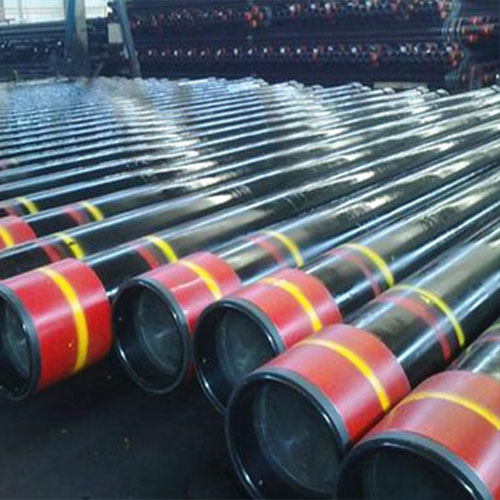Table of Contents
مزايا استخدام آلة التعبئة الهيدروليكية القابلة للاسترجاع لحقول النفط API 11D
كيفية تركيب وصيانة آلة تعبئة الغلاف الخارجية بشكل صحيح لعمليات حقول النفط
بمجرد فحص مكونات الباكر واعتبارها في حالة جيدة، يمكن تثبيت الباكر على سلسلة الغلاف. يجب وضع جهاز التعبئة على العمق المطلوب في حفرة البئر وتثبيته بشكل آمن على الغلاف باستخدام أدوات الإعداد المناسبة. من المهم اتباع إرشادات الشركة المصنعة لإعداد جهاز التعبئة لضمان إنشاء ختم مناسب بين الغلاف والأنابيب.
بعد ضبط جهاز التعبئة، من المهم اختبار الضغط على جهاز التعبئة للتحقق من أنه يتحمل الضغط وإنشاء ختم موثوق. يمكن القيام بذلك عن طريق الضغط على الحلقة الموجودة بين الغلاف والأنابيب ومراقبة أي انخفاض أو تسرب في الضغط. إذا تم اكتشاف أي مشكلات أثناء اختبار الضغط، فيجب إعادة ضبط أداة التعبئة أو استبدالها لضمان العزل المناسب للمناطق الموجودة في حفرة البئر.
تعد الصيانة المناسبة لآلة تعبئة الغلاف الخارجية أمرًا ضروريًا لضمان طول عمرها وفعاليتها في عمليات حقول النفط. يجب إجراء عمليات تفتيش منتظمة للتحقق من وجود أي علامات تآكل أو تلف في مكونات العبوة. يتضمن ذلك فحص جسم الباكر، والزلاقات، والأختام، وآلية الإعداد لأي تآكل أو تآكل أو تشوه. يجب استبدال أي مكونات تالفة على الفور لمنع حدوث أي مشاكل أثناء عمليات البئر.
بالإضافة إلى عمليات الفحص المنتظمة، يجب اختبار أدوات تغليف الغلاف الخارجي بشكل دوري للتأكد من أنها تعمل بشكل صحيح. يمكن أن يشمل ذلك إجراء اختبارات الضغط للتحقق من قدرة شركة التعبئة على الضغط وإنشاء ختم موثوق. من المهم أيضًا مراقبة أداء آلة التعبئة أثناء عمليات البئر للتأكد من أنها تعزل المناطق الموجودة في حفرة البئر بشكل فعال. من خلال اتباع تعليمات الشركة المصنعة للتركيب وإجراء عمليات التفتيش والاختبارات المنتظمة، يمكن للمشغلين التأكد من أن آلات التعبئة الخاصة بهم تعمل بشكل صحيح وفعال لعزل المناطق في حفرة البئر. ومن خلال اتخاذ هذه الخطوات، يمكن للمشغلين تقليل مخاطر انتقال السوائل وضمان سلامة وكفاءة عمليات الآبار الخاصة بهم.

Once the Packer components have been inspected and deemed to be in good condition, the packer can be installed on the casing string. The packer should be positioned at the desired depth in the wellbore and securely attached to the casing using the appropriate setting tools. It is important to follow the manufacturer’s instructions for setting the packer to ensure a proper seal is created between the casing and the tubing.
After the packer has been set, it is important to pressure test the packer to verify that it is holding pressure and creating a reliable seal. This can be done by applying pressure to the annulus between the casing and the tubing and monitoring for any pressure drops or leaks. If any issues are detected during the pressure test, the packer should be reset or replaced to ensure proper isolation of zones in the wellbore.
Proper maintenance of an external casing packer is essential to ensure its longevity and effectiveness in oilfield operations. Regular inspections should be conducted to check for any signs of wear or damage to the packer components. This includes inspecting the packer body, Slips, Seals, and setting mechanism for any corrosion, erosion, or deformation. Any damaged components should be replaced promptly to prevent any issues during well operations.
In addition to regular inspections, external casing packers should be periodically tested to ensure they are functioning properly. This can include conducting pressure tests to verify the packer’s ability to hold pressure and create a reliable seal. It is also important to monitor the packer’s performance during well operations to ensure it is effectively isolating zones in the wellbore.
In conclusion, proper installation and maintenance of an external casing packer are essential for successful oilfield operations. By following the manufacturer’s instructions for installation and conducting regular inspections and tests, operators can ensure that their packers are functioning properly and effectively isolating zones in the wellbore. By taking these steps, operators can minimize the risk of fluid migration and ensure the Safety and efficiency of their well operations.
